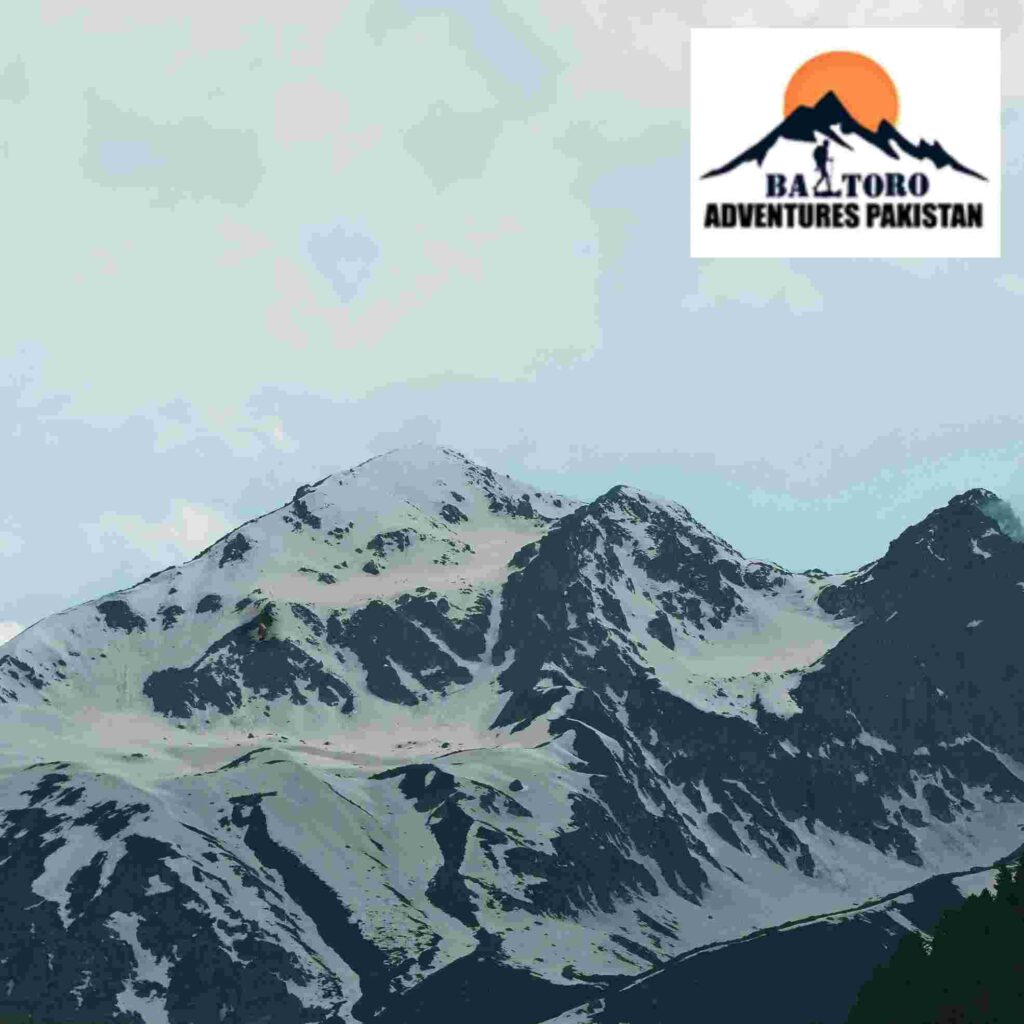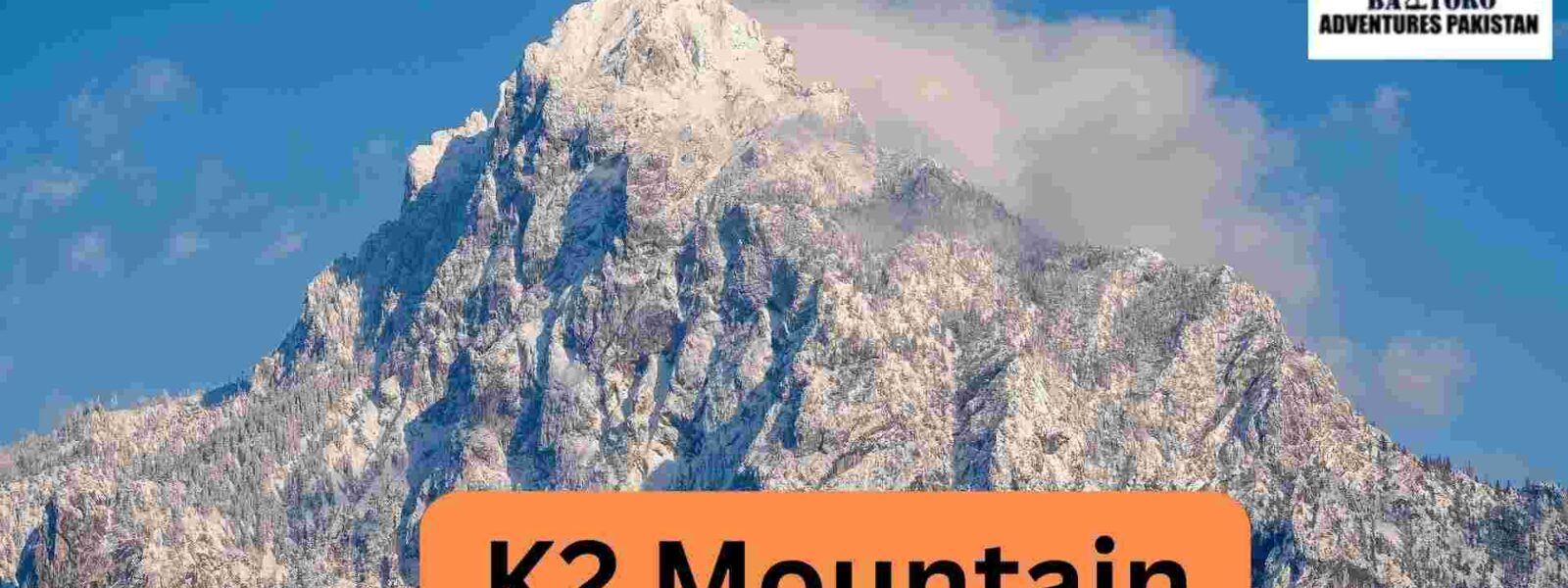Located in the remote Karakoram Range of Gilgit-Baltistan, Pakistan, K2 mountain is the world’s second-highest mountain, standing at 8,611 meters (28,251 bases) above ocean position.
Getting to K2 isn’t just a journey; it’s a trip into one of Earth’s most adventurous regions. From covering rugged geographies to boarding under the cover of stars, the path to K2 Base Camp offers an experience that’s as satisfying as it’s demanding.
In this blog, we will provide authentic details about K2 Mountain in terms of its location, significance, and climbing difficulty. We will also explore where K2 mountain is and what the history of K2 climbing is.
Where is K2 located?
Whenever you plan a trip to K2 mountain, the only question that comes in your mind is in which country is K2 located? K2 is located partly in the Gilgit Baltistan region of Pakistan and Xinjiang, China. It is right on the China and Pakistan borders.
It lies within the Central Karakoram National Park, surrounded by some of the world’s highest and most breathtaking peaks, including Broad Peak, Gasherbrum I & II, and the Trango Towers.

The nearest city to K2 is Skardu, which serves as the gateway for rovers and pedestrians heading toward the mountain. From Skardu, peregrinations travel by jeep to Askole, the last village before the journey begins. The trip also continues through the Baltoro Glacier, passing stunning locales like Concordia, where multiple peaks above 7,000 measures stand in view.
K2’s remote and rugged position adds to its mystique, making it one of the most isolated and grueling mountains in the world to pierce. The stirring geographies, extreme rainfall conditions, and towering glaciers make this region a paradise for adventure campaigners and perambulators.
Why is K2 called “The Savage Mountain”?
Steep and Technical Terrain
K2’s pitches are significantly steeper, requiring advanced specialized skills. The mountain has several grueling sections, similar to the House’s Chimney, Black Aggregate, and the Bottleneck, where rovers face nearly perpendicular ice and gemstone walls.
Changeable Weather
K2’s rainfall is ignominious for being extremely harsh and unpredictable. Storms can last for days, and rovers frequently face unforeseen whiteouts or violent winds during the climbing season. The Karakoram Range, where K2 is located, gets colder and harsher rainfall than the Himalayas.
No Support from Sherpas or Fixed structure
Unlike other mountains, where marketable peregrinations have created a well-established climbing route with ropes, graduations, and Sherpa support, K2 mountain offers no similar luxuries. Rovers must calculate on their chops, making it a far more isolated and dangerous rise.
High Fatality Rate
How many people have died climbing K2? K2 death rate, the loftiest death rate of any 8,000-cadence peak, historically at around 25%. For every four rovers who peak, the bone doesn’t return. Crucial troubles include avalanches, falling ice, and prostration on the descent.
Shorter Climbing Window
K2 has a critical narrower climbing season, primarily in June and July, with slightly less severe rainfall. Outside of this, climbing becomes nearly insolvable.
K2 is widely recognized as one of the world’s most challenging mountains. Due to its irregular and narrow peaks, K2 climbing requires technical expertise, physical fitness, and mental preparation.
History of K2 Mountain Climbing
Discovery and Naming
K2 was first surveyed in 1856 by British surveyor Thomas Montgomerie during the Great Trigonometrical Survey of India. It was the second peak recorded in the Karakoram Range, which led to its simple designation as “K2” (Karakoram 2). Unlike other famous peaks, K2 was never given a local name because of its remote and inaccessible location.
Early Climbing Attempts
- 1902 – The first serious attempt to climb K2 was led by British mountaineer Oscar Eckenstein and Swiss climber Aleister Crowley. They reached 6,525 meters before turning back due to bad weather and lack of proper equipment.
- 1909 – Italian explorer Prince Luigi Amedeo, Duke of the Abruzzi, led another expedition. Though they reached 6,250 meters, he declared the mountain “impossible to climb.”
- 1938 – An American team led by Charles Houston made a reconnaissance expedition and identified the Abruzzi Spur as the most feasible route to the summit.
The First Successful Ascent (1954)
K2 was finally conquered on July 31, 1954, by Lino Lacedelli and Achille Compagnoni, part of an Italian expedition led by Ardito Desio. The climbers took the Abruzzi Spur route, battling severe weather and harsh conditions to reach the summit.
How many climbers climb K2 every year?
K2 climbing is taught by roughly 300 rovers every time. The K2 Base Camp Trek demands proper medication for climbing, including regular exercise and adaptation, walking and running to enhance cardiovascular abidance, and passing short altitude climbing and hiking conditioning.
While growing in fashionability, the journey to K2 Base Camp remains far less crowded, feeding primarily to seasoned comers seeking solitariness and challenge. High altitude, changeable rainfall conditions, roughed and imbalanced shells, snowy peaks, and glacier crossing are the significant pitfalls a rambler must face during the K2 Base Camp Trek.
How much is a permit to climb K2?
How much does it cost to climb K2? Standing at a high altitude of 8611m, K2 is often regarded as the world’s second-highest and most challenging peak. To reach the summit of K2, you must fulfil all the mandatory requirements before starting K2 Trek. K2 climbing is expensive due to its challenging route. Let’s break down the total expenses during K2 climbing.
K2 Permit Fee
The K2 permit fee is the initial and essential cost required to approve your expedition officially from the council of Gilgit Baltistan. It depends on the days and months of your expedition. If you take more than a month to reach the summit of K2, it will be expensive compared to completing the trek in 15 to 20 days. The permit fees also differ for foreign and local climbers.
For Foreign Climbers:
- Individual: $5,000 per climber in 2025
- Group: $12,000 for a group of up to seven climbers in 2024
For Pakistani Climbers:
- Summer: 100,000
- Autumn: 50,000
- Winter: 30,000
Covered with heavy snow and changing weather conditions, climbers need help reaching their peak. Many trekkers end their journey meeting with the K2 base camp, but some adventure seekers want to achieve a higher reputation and deadly success. The summer season attracts more climbers to capture the beauty of this hazardous mountain, K2, but in most cases, the chance of an accident or K2 death rate during climbing becomes high.
From its first check in 1856 to its major downtime ascent in 2021, K2 has remained an icon of adventure and perseverance. Despite its harsh rainfall, specialized difficulty, and high casualty rate, the mountain continues to attract those seeking to test their limits.
If you are also interested in K2 climbing, visit our website for reasonable K2 expeditions and flexible K2 expedition packages. Furthermore, Baltoro Adventure also offers K2 Expedition and the essential training for trekking and climbing the K2 peak. For further information, you can contact us on social media.
FAQs
Where is K2 mountain located?
K2 is located partly in the Gilgit Baltistan region of Pakistan and Xinjiang, China. It is right on the China and Pakistan borders.
Do I need special insurance for climbing K2?
Yes, to compensate for the extra charges of your medication, accident, or any other emergency, the K2 climbing insurance policy offers a wide range of flexibility in ensuring the recovery of these extra or miscellaneous charges.
Why is K2 considered more challenging to climb than other mountains?
K2 is considered more challenging to climb than other mountains for several reasons despite the slightly harsh climatic conditions, technical challenges, and mental preparation requirements.
How many people successfully climb K2 each year?
Each year, K2 sees significant world limbers, with only about 300 climbers attempting to summit annually. Of these, only 30-40% succeed due to K2’s notoriously tricky terrain.
How much does it cost to climb K2?
The cost of climbing K2 can range from $15,000 to $85,000, depending on the type of expedition package, the services included, and the climb season. This includes permit fees, expedition costs, equipment, and additional expenses like travel and insurance.
How many days does it take to reach K2 Base Camp?
During the K2 Base Camp Trek, the trekker covers almost 125 km from the starting point to K2 Base Camp. This huge distance usually takes 9 to 10 days to complete. Daily trekking hours may range from 8 to 10 hours based on the path followed and the altitude.


